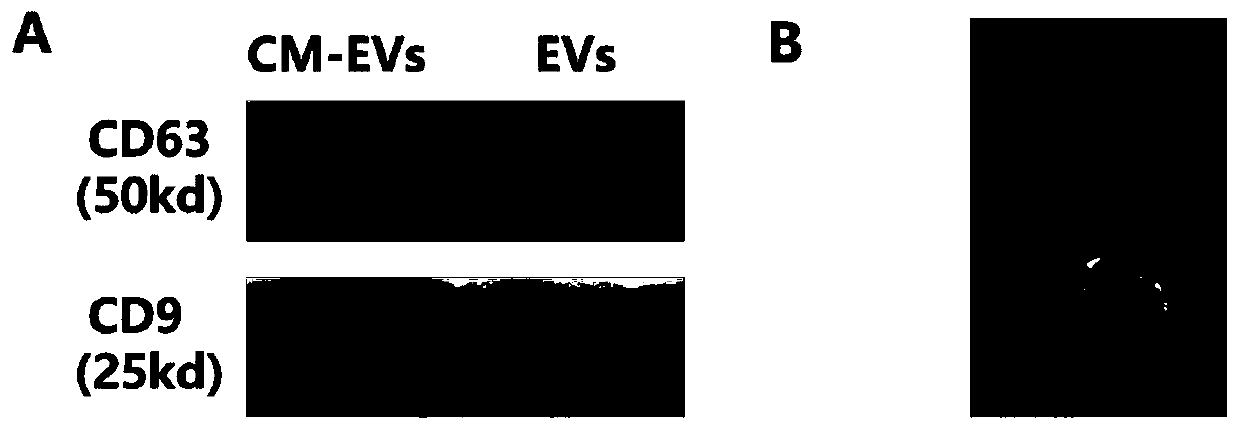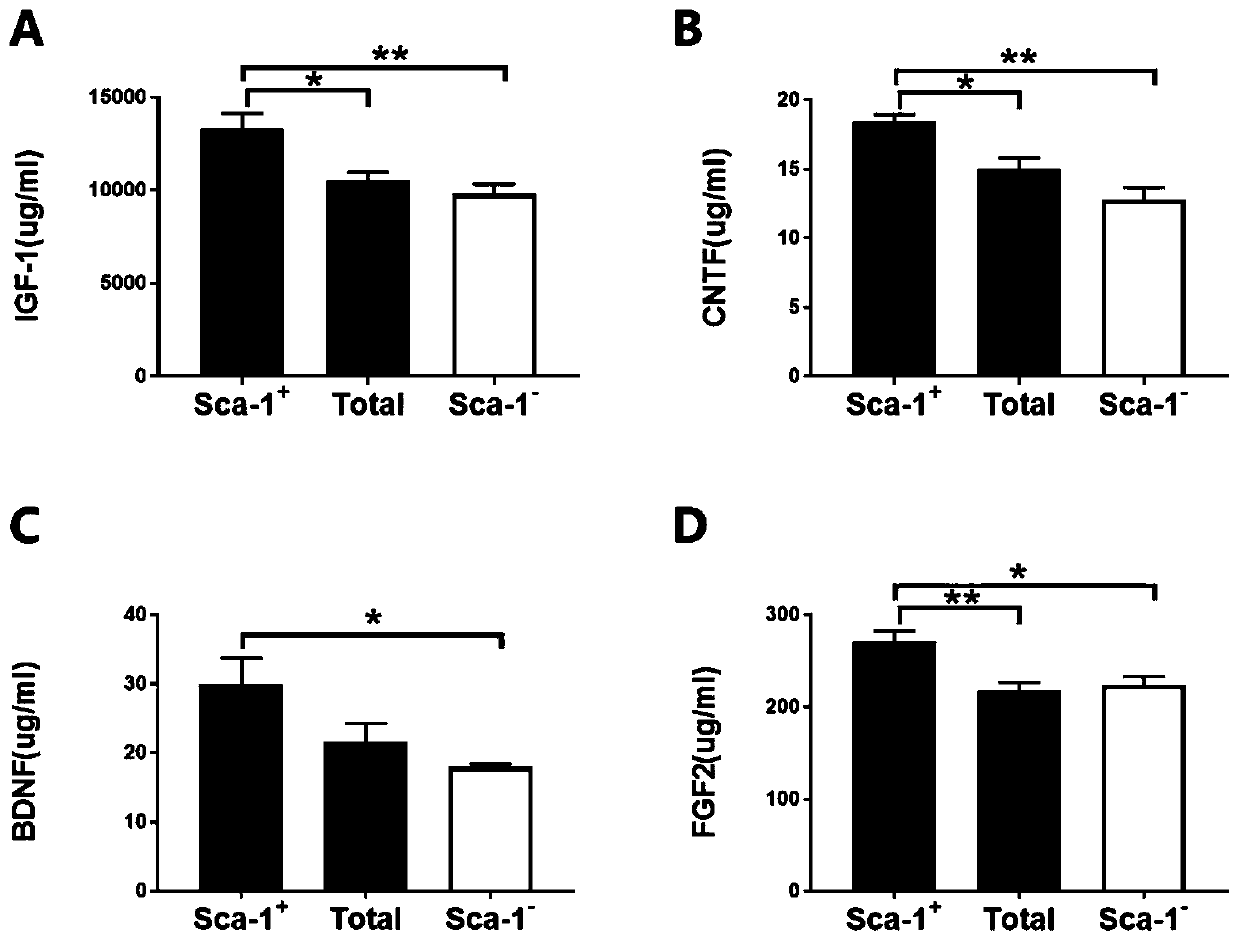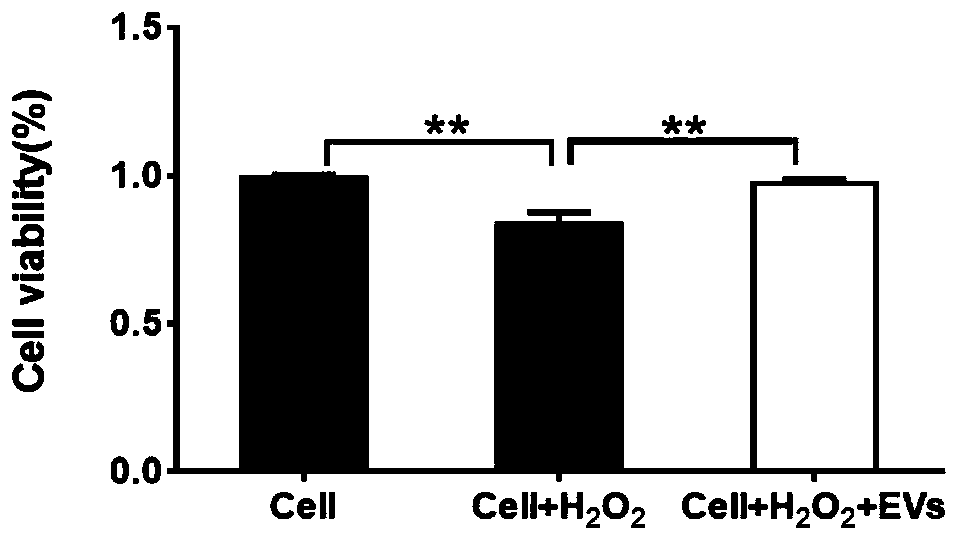Application of stem cell Sca-1<+> subgroup exosome in preparation of biological agent for repairing retinal injury
A technology for retinal damage and biological agents, applied in the direction of microorganisms, animal cells, vertebrate cells, etc., can solve problems such as differences in active substances, achieve high efficacy, strong clinical transformation potential, and avoid side effects
- Summary
- Abstract
- Description
- Claims
- Application Information
AI Technical Summary
Problems solved by technology
Method used
Image
Examples
Embodiment 1
[0021] Example 1 Stem Cell Sca-1 + Application of subpopulation exosomes in retinal injury repair
[0022] Take fresh bone marrow stem cells from C57BL / 6 mice aged 2-3 months, and form a concentration of 1×10 8 cell suspension, according to Sca-1 Positive Cell Screening Kit Description Sorting bone marrow cells, the adsorbed cells are BMCs-Sca-1 + , unadsorbed cells are BMCs-Sca-1 - , and unsorted BMCs were used as control cells, which were suspended in 0.9% saline for later use. Isolated BMCs-Sca-1 + , BMCs-Sca-1 - and BMCs-total were respectively cultured in exosome-free serum medium to a density of about 80%-95%, collected the mixture of cells and medium in each group, extracted and purified exosomes by ultracentrifugation, and centrifuged at 300g at 4°C for 10 Remove the cells and their debris within minutes, take the supernatant, and continue to centrifuge at 3000g at 4°C for 10 minutes to remove residual cell debris; take the supernatant and centrifuge at 10,000g ...
PUM
 Login to View More
Login to View More Abstract
Description
Claims
Application Information
 Login to View More
Login to View More - R&D
- Intellectual Property
- Life Sciences
- Materials
- Tech Scout
- Unparalleled Data Quality
- Higher Quality Content
- 60% Fewer Hallucinations
Browse by: Latest US Patents, China's latest patents, Technical Efficacy Thesaurus, Application Domain, Technology Topic, Popular Technical Reports.
© 2025 PatSnap. All rights reserved.Legal|Privacy policy|Modern Slavery Act Transparency Statement|Sitemap|About US| Contact US: help@patsnap.com



